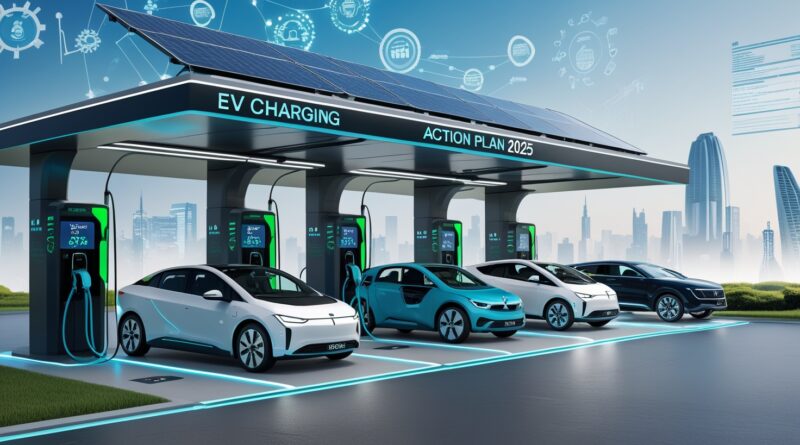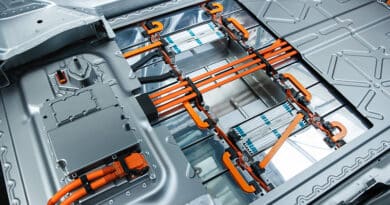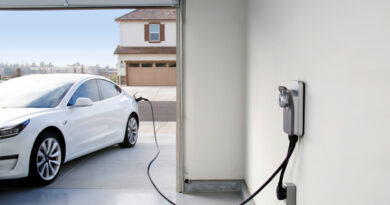The EV-Charging Action Plan: How will it affect the future of EVs?
The electron volt Charging Action arrangement is meant to scale back vehicle emissions by implementing property infrastructure across the country to support the flow of the latest EVs on the road
As extreme weather around the world still rises in prominence, there’s one factor on everyone’s mind: What will we tend to do to slow it down? The climate is in desperate need of aggressive action plans to assist reverse or cut down changes within the atmosphere.
In response, the Biden administration freed its initial arrangement for reducing America’s contribution to global climate change in August 2021 and finalized the arrangement in December. this text can explore what the arrangement is and what it’ll mean for the close way forward for EVs.
Table of Contents
The arranged nonpartisan Infrastructure Law Investments
As a part of the nonpartisan Infrastructure Law Investments, the Biden administration plans on making certain that a minimum of five-hundredths of all new automotive sales involve “zero-emissions vehicles, together with battery-electric, plug-in hybrid electric, or cell electrical vehicles” by 2030. The goal is to chop emissions of oxyacetylene by vehicles by 2 billion metric a lot of carbon pollution by that point.
Not solely can the money endowed within the program facilitate to support of automotive makers, but {it can|it’ll} encourage the Yankee domestic provide chain, and therefore the workforce within the business will grow further.
The administration believes that by bolstering property, the arrangement will build automotive makers and town planners feel a lot incentivized to require action themselves.
The electron volt charging action arranges
The electron volt Charging Action arrange set in December is meant to scale back vehicle emissions by implementing property infrastructure across the country to support the flow of the latest EVs on the road.
To directly reply to the charging deserts around America wherever voters United Nations agency wish to shop for EVs area unit discouraged by the dearth of convenient availableness of charging stations, the plan’s “initial focus is building a convenient, reliable public charging network that may build public confidence, with a spotlight on filling gaps in rural, deprived, and hard-to-reach locations.”
Stakeholders from massive vehicle makers and connected organizations area units are already on board with the arrangement, including:
- Ford
- General Motors
- Stellaris
- United car employees (UAW)
The arrangement additionally addresses creating the batteries that fuel electrical vehicles a lot of property further. The strategy can accomplish this time through checking the property of the batteries themselves — like by ensuring {they area unit|they’re} reliable and durable — and additionally making certain the minerals that the batteries area unit made of are ethically and sustainability strip-mined.
After every battery is built, Federal agencies can review the batteries and build recommendations for “supporting property and accountable domestic mining and process of key battery minerals, like Li, metal, and nickel, and making certain new domestic automotive battery production adheres to high-road labor standards.”
Where minerals, like Li, aren’t without delay out there, the Biden administration is funding to expand the sourcing of these minerals. One such effort involves operating with the renewable energy company, Redwood Materials, to supply Li with recycled materials.
Finally, the administration is providing funding of $200 million to confirm the batteries created area unit reusable and another $60 million of funding toward mineral analysis and development, further as demonstration usage comes.
The future for EVs can seemingly be brighter with these new laws. With a lot of electron volt choices to decide on from at the business and larger charging accessibility once on the road, electron volt shoppers can feel softer creating the switch from gas-powered to electrical.
How much can you pay to charge your EV? the solution to the current question takes some calculations.
Switching from gas-powered to electrical vehicles is AN exciting step toward a greener world. As energy corporations race to stay up with the growing demand for charging stations and cheap electrical cars, customers area unit wondering: what proportion will it price to charge AN EV?
The answer to the current question takes some calculations, we’ve weakened the figures therefore you recognize the way to budget your charging prices monthly.
Electricity prices
To kick things off, let’s inspect what the common Yankee would pay per hour charging their electron volt. the simplest thanks to calculating this on your own are by dividing your invoice by the overall range of Kilowatts used per hour (kWh). Then take what percentage kWh your vehicle runs on and multiply that by what proportion you usually pay in electricity per hour.
According to the Energy data Administration (EIA), the common aim of the U.S. in 2021 was to charge nearly $0.14 per kWh. Taking this range for our example, newer EVs will setback to a hundred kWh. this suggests it might price you $14 to charge your electron volt to full capability if you “fueled” up reception.
Another way to contemplate what proportion you’ll seemingly pay to charge your electron volt is by breaking it down by the mathematical statement: The electricity price per day is adequate to the energy consumption, “E”, in kWh per day increased by the energy price of one kWh in cents per kWh divided by a hundred cents per greenback.
Cost($/day) = E(kWh/day) × Cost(cent/kWh) / 100(cent/$).
Comparing electron volt prices with gas prices
In 2021 thus far, the common price of gas hovers around $3.16 in step with a study done by AAA. mistreatment our a hundred kWh electron volt, it will drive three hundred miles before having to refuel. Of course, this will vary looking on whether or not you’re driving on a cragged road or you’re stuck in traffic. However, on a straight road, this electricity will go up to three hundred miles.
Let’s compare that to what proportion a typical sedan would price to drive even as a way.
The average sedan will hold between eleven and eighteen gallons of gas at a time and also the average miles per gallon (MPG) sits between thirty-one and thirty-nine. If the value of gas is $3.16 a gallon, it’ll price on the brink of $35 to top off AN 11-gallon tank ANd up to $56 to top off an 18-gallon tank. Driving three hundred miles within the average sedan might price between $28 and $25.
Therefore, {the price|the value|the price} of filling up your tank ANd driving even as way as a high-powered electron volt might cost you doubly the maximum amount at the gasoline pump because it will at an outlet.
FAQs
The EV Charging Action Plan is a U.S. government initiative to reduce vehicle emissions by building a nationwide charging infrastructure, making it easier for people to adopt electric vehicles (EVs).
The plan supports the shift from gas-powered to electric vehicles, which emit significantly less carbon pollution. By cutting vehicle emissions, the plan contributes to slowing down climate change.
The goal is to ensure that at least 50% of all new car sales in the U.S. are zero-emission vehicles (battery-electric, plug-in hybrids, or fuel cell EVs) by 2030.
Key industry players such as Ford, General Motors, Stellantis, and United Auto Workers (UAW) support the initiative, showing broad collaboration across the automotive sector.
The plan focuses on eliminating “charging deserts” — areas with few or no charging stations — by building a reliable, accessible public charging network, especially in rural, disadvantaged, and hard-to-reach areas.
The plan aims to cut 2 billion metric tons of carbon emissions by 2030 through EV adoption and eco-friendly infrastructure development.
The plan ensures batteries are:
Durable and reliable
Made from ethically and sustainably sourced minerals (like lithium, nickel, cobalt)
Recyclable through new technologies and partnerships (e.g., Redwood Materials)
Yes, the government is investing:
$200 million for battery reusability programs
$60 million in mineral research and sustainable demonstration projects
On average, charging at home costs around $14 for a full 100 kWh charge (based on $0.14/kWh). This gives many EVs a range of up to 300 miles.
EV (300 miles range): ~$14
Gas Sedan (300 miles range): $28–$56
So, charging an EV can cost 2x less than refueling with gas, depending on driving conditions.
Yes! Use this formula:
Cost ($/day) = [Energy used in kWh] × [Price per kWh] / 100
Example:
If your EV uses 30 kWh/day and electricity costs $0.14/kWh:
Cost = 30 × 14 / 100 = $4.20/day
With government support, better infrastructure, and lower operating costs, EVs are expected to become more accessible, affordable, and widely adopted — shaping a cleaner, greener future for transportation.







